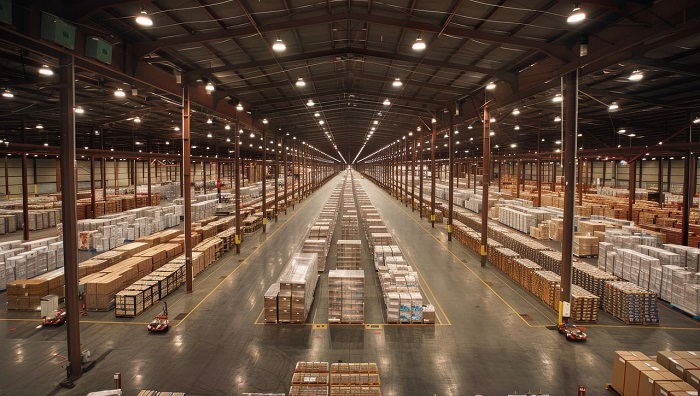Introducing a new warehouse system is a significant step for any business aiming to enhance its operations. With the right system, companies can improve efficiency, reduce errors, and better manage inventory, ultimately leading to increased customer satisfaction and profitability. However, the implementation process can be complex and requires careful planning and consideration. Various factors must be evaluated to ensure that the new system aligns with the company’s goals and integrates seamlessly with existing processes. This article outlines the key considerations for businesses looking to implement a new warehouse system, providing a comprehensive guide to making informed decisions that will support long-term success.
Understanding Your Business Needs and Goals
Before selecting a new warehouse system, it is crucial to have a clear understanding of your business needs and goals. Start by analysing your current warehouse operations to identify areas that require improvement. Consider factors such as inventory turnover rates, order accuracy, and lead times. Understanding these metrics will help you pinpoint the specific features and capabilities you need in a new system.
Additionally, involve key stakeholders from various departments in the decision-making process. Their insights can provide a more comprehensive view of the operational challenges and requirements. For example, the input from the sales team can highlight the importance of real-time inventory visibility, while the IT department can address integration and data management concerns.
Finally, set clear objectives for what you want to achieve with the new warehouse system. Whether it’s improving order fulfilment speed, reducing operating costs, or enhancing scalability, having defined goals will guide your selection process and ensure that the system you choose aligns with your long-term business strategy.
Evaluating Different Warehouse Management Systems
Once you have a clear understanding of your business needs and goals, the next step is to evaluate different warehouse management systems (WMS). Begin by researching various options available in the market, focusing on systems that offer the features and capabilities that match your identified requirements. Look for solutions that provide robust inventory management, real-time data tracking, and advanced reporting tools.
Consider the scalability of each system. Your business needs today may not be the same in a few years, so it’s important to choose a WMS that can grow with you. Evaluate the flexibility of the system in terms of adding new functionalities or integrating with other technologies as your operations expand.
Another important factor is user-friendliness. A system that is intuitive and easy to use will reduce the time and cost associated with training employees. Request demos or trial versions of the systems you are considering assessing their usability and functionality firsthand.
Finally, seek feedback from current users of the systems you are evaluating. Customer reviews and case studies can provide valuable insights into the performance and reliability of the WMS in real-world scenarios. This due diligence will help you make an informed decision and select a system that will effectively support your business operations.
Integration with Existing Technologies
Integrating a new warehouse system with your existing technologies is crucial for seamless operations. The first step is to conduct a thorough audit of your current technological infrastructure. Identify the systems that are already in place, such as enterprise resource planning (ERP) software, order management systems, and transportation management systems. Understanding the interfaces and data flows between these systems will help in planning the integration process.
Choosing a warehouse management system (WMS) that offers robust API capabilities can significantly simplify integration. APIs allow different software applications to communicate with each other, ensuring real-time data exchange and minimizing the risk of data silos. Additionally, consider the compatibility of the new WMS with your existing hardware, such as barcode scanners, RFID readers, and mobile devices. This ensures that all components work together harmoniously, reducing potential disruptions during the implementation phase.
It’s also important to involve your IT team from the early stages of the project. Their technical expertise is invaluable in addressing potential integration challenges and ensuring that the new system complements your existing technology stack. Finally, thorough testing is essential before going live. Run comprehensive tests to verify that all systems communicate effectively, and that data integrity is maintained across platforms.
Enhancing Supply Chain Efficiency with the Right Warehouse System
Enhancing supply chain efficiency is a key benefit of implementing the right warehouse system. Advanced supply chain technology can streamline operations by providing real-time visibility into inventory levels, order statuses, and shipment tracking. This level of transparency enables businesses to make informed decisions quickly, reducing delays and improving overall supply chain performance.
Integrating supply chain management software with your warehouse system allows for better coordination between different stages of the supply chain. For example, when inventory levels drop below a certain threshold, the system can automatically trigger reorder processes, ensuring that stock levels are maintained without manual intervention. This not only saves time but also minimizes the risk of stockouts and overstock situations.
Balloon One offers a range of supply chain software solutions designed to enhance efficiency and productivity. Their systems are tailored to integrate seamlessly with various warehouse management systems, providing a comprehensive solution for supply chain optimization. By leveraging these advanced tools, businesses can achieve greater accuracy in order fulfilment, reduce operational costs, and improve customer satisfaction.
The right warehouse system also facilitates better communication and collaboration across the supply chain. With real-time data accessible to all stakeholders, from suppliers to customers, potential issues can be identified and addressed promptly.
Training and Support for Your Team
Implementing a new warehouse system is only effective if your team is well-prepared to use it. Comprehensive training programs are essential to equip your staff with the necessary skills and knowledge. Start by developing a detailed training plan that covers all aspects of the new system, from basic functionalities to advanced features.
Interactive training sessions can enhance understanding and retention. Consider using a mix of training methods, including hands-on workshops, video tutorials, and online courses. This approach caters to different learning styles and ensures that all team members can grasp the new processes effectively. Additionally, appointing system champions within your team can be beneficial. These are individuals who receive advanced training and can provide ongoing support to their colleagues.
Continuous support is also crucial. Establish a helpdesk or support team that can assist employees with any issues they encounter while using the new system. Regularly scheduled refresher courses can help reinforce knowledge and keep everyone up-to-date with any system updates or new features.
Feedback from your team is invaluable during this transition period. Encourage employees to share their experiences and suggestions for improvement. This not only helps in identifying any gaps in the training but also fosters a sense of ownership and engagement among the staff.
Measuring Success: Key Performance Indicators (KPIs) for Warehouse Systems
Measuring the success of a new warehouse system involves tracking key performance indicators (KPIs) that offer insights into various aspects of warehouse operations. One crucial KPI is order accuracy, which measures the percentage of orders correctly picked, packed, and shipped. High order accuracy rates indicate effective error minimization. Another important KPI is order cycle time, tracking the duration from order receipt to shipment. Reduced cycle times suggest streamlined processes and faster fulfilment.
Inventory accuracy reflects the consistency between recorded and actual inventory levels. High accuracy optimizes inventory management, reducing stockouts and overstock situations. Labour productivity measures efficiency, tracking orders processed per hour. Increased productivity signifies that the system simplifies tasks.
Cost-related KPIs, such as cost per order, highlight financial impacts. Monitoring these KPIs provides valuable insights, ensuring the warehouse system meets operational goals and contributes to overall success.




